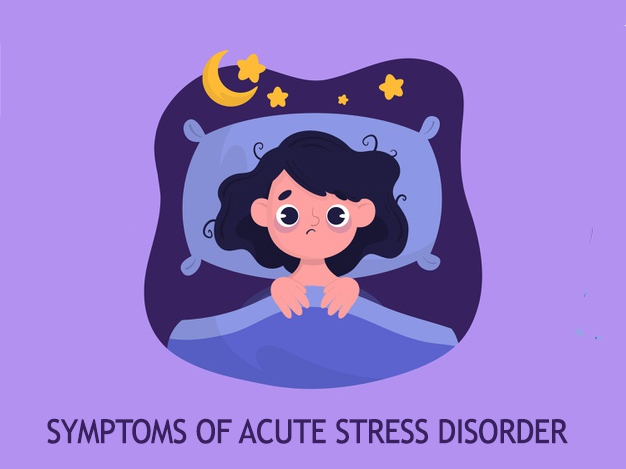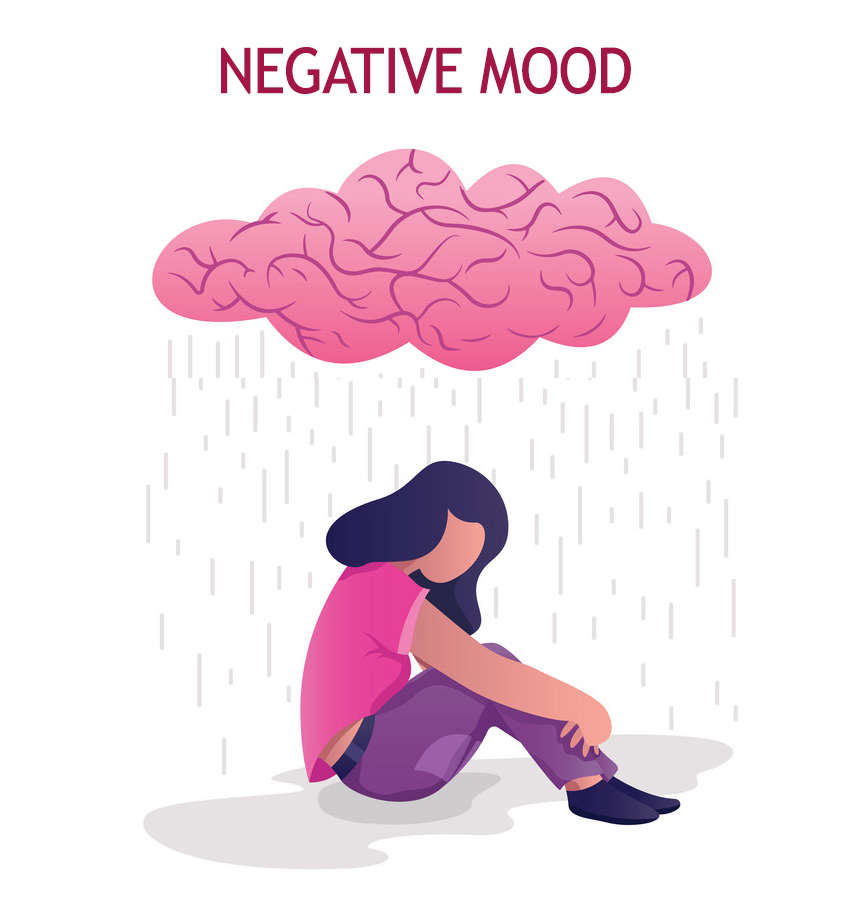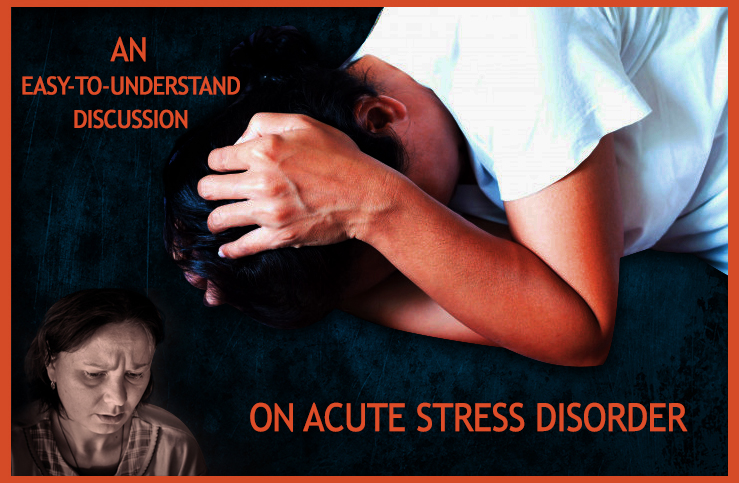An Easy-to-Understand Discussion on Acute Stress Disorder
Acute Stress Disorder or ASD is a potentially dangerous mental health condition, which can lead to Post-Traumatic Stress Disorder or PTSD if left alone without treatment and recognition. It usually occurs after a traumatic event and causes a wide range of psychological symptoms.
ASD and PTSD share a close relationship, and many people develop PTSD after having ASD.
It is only natural that all of us respond to a traumatic event differently. However, we should be aware of the potential psychological and physical effects that it can have later on in life.
Here, we are going to see what ASD stands for, the causes of acute stress disorder, its symptoms, diagnosis, treatment, and prevention.
WHAT IS ACUTE STRESS DISORDER?

This kind of stress disorder is a relatively new psychological diagnosis. As already mentioned, it shares many symptoms of Post-Traumatic Stress Disorder or PTSD. But, one should also remember that acute stress disorder or ASD is a different diagnosis.
ASD, unlike, PTSD is a temporary condition, and the symptoms usually persist anywhere between 3 to 30 days after a traumatic event. In case a person suffers from the symptoms for a longer duration than this, then a mental health expert will assess them for PTSD.
SYMPTOMS OF ACUTE STRESS DISORDER

The symptoms of ASD are very much similar to various other stress disorders, especially to that of PTSD. The symptoms are usually divided into 5 broad categories. They are as follows:
-
INTRUSION SYMPTOMS
These happen when a person cannot stop re-visiting a traumatic event through memories, flashbacks, and dreams.
-
NEGATIVE MOOD

This includes a person experiencing negative thoughts, low mood, and sadness.
-
DISSOCIATIVE SYMPTOMS
Some of these include a lack of awareness of surroundings, an altered sense of reality, and an inability to remember specific parts of the traumatizing event.
-
AVOIDANCE SYMPTOMS
Those who have these symptoms tend to avoid feelings, thoughts, places, and people whom they can associate with their traumatic event.
-
AROUSAL SYMPTOMS
Sleep disturbances, including insomnia, finding it difficult to concentrate, irritability, and aggression, either verbally or physically, usually falls under these symptoms. Moreover, a person might also get startled easily and feel stressed out and on guard most of the time.
It is worth mentioning that people with acute stress disorder or ASD might also develop other mental health problems, mostly depression and anxiety. So, let us briefly see their symptoms as well:
SYMPTOMS OF DEPRESSION
- A constant feeling of sadness, hopelessness, and numbness.
- A constant feeling of exhaustion.
- Starting to cry all of a sudden.
- A lack of interest in doing things that used to bring joy.
- Thought of self-harm and suicide.
SYMPTOMS OF ANXIETY
- Having a feeling of impending doom.
- Worrying excessively.
- Having difficulty concentrating.
- Having racing thoughts and a feeling of restlessness.
CAUSES OF ACUTE STRESS DISORDER
Witnessing, experiencing, or being confronted with one or more than one traumatic event are some of the causes of acute stress disorder. These events create a feeling of horror, fear, and helplessness.
Some traumatic events that can be considered to because of acute stress disorder include the following:
- The death of a loved one.
- The threat of death or a chance of serious injury to oneself or others.
- Any natural disaster.
- Domestic abuse, sexual assault, or rape.
- Surviving a life-threatening and extremely traumatic injury to the brain.
- Receiving a terminal diagnosis.
WHO IS AT RISK FOR ASD?
Anyone can develop ASD at any point in their lives after going through a traumatic event. However, a person might have an increased risk of developing this stress disorder if he or she has:
- Previous experience, knowledge, or witnessing of a traumatic event.
- A documented history of PTSD and ASD.
- Any history of previous mental health problems.
- A history of dissociative symptoms during past traumatic events.
Also, females and those under the age of 40 are at a greater risk of developing ASD.
HOW IS IT DIAGNOSED?
An acute stress disorder diagnosis can only be made by a qualified and certified mental health expert. Usually, they ask specific questions about the event that traumatized the person and the symptoms they have.
The mental health expert will diagnose someone with ASD if the person has 9 or more than 9 symptoms of ASD and develops them within the first month of the event. If the symptoms exist longer than 1 month, then the person might have PTSD.
Also, in order for an accurate acute stress disorder diagnosis, the mental health professional is going to rule out other causes like the following:
- Problems relating to health.
- Drug or substance abuse.
- Medical side-effects.
- Any other psychiatric disorders.
TREATMENTS FOR ASD
A mental health professional works closely with a patient to develop a plan as to how to treat acute stress disorder.
A doctor might use one of the methods given below for acute stress disorder treatment:
- A thorough psychiatric evaluation in order to determine the patient’s needs.
- A mental health professional might even consider hospitalization if he/she thinks that the patient is at risk of seriously harming themselves or committing suicide.
- Providing help with obtaining food, shelter, clothing, and, if necessary, assistance with locating family.
- Providing proper psychiatric education so that the person can learn about the disorder.
- Cognitive Behavioural Therapy or CBT can be used for acute stress disorder treatment. CBT involves working with a mental health expert to help develop coping strategies. It also increases the rate of recovery and stops ASD from turning into PTSD.
- A health care professional might also prescribe medication for acute stress disorder. These mainly include anticonvulsants and antidepressants. SSRIsor Selective Serotonin Reuptake Inhibitors are also prescribed. Anti-anxiety drugs are not recommended, and if it is administered at all, it will be done so in low doses. This is because these medicines can create dependency and also increases the risk of developing PTSD.
- A professional can prescribe Beta-blockers in order to lessen the physical symptoms of ASD.
IS IT POSSIBLE TO PREVENT ASD?
It is really not possible to guarantee that someone will never experience a traumatic event in their life. But, there is hope!! There are certain ways to reduce the risk of developing ASD later on. They include the following:
- Consulting a mental health expert after a traumatic event.
- Asking for support from friends and family.
- Getting proper treatment for any other mental health problems.
- Working with a behavioural coach to develop helpful coping strategies.
- Arranging for preparation training if a job involves possible exposure to traumatic events.
SYNOPSIS
Acute stress disorder or ASD is a common condition, and it usually occurs after someone experiences a traumatising event. People whose occupation has a greater probability of exposure to traumatic events are at higher risk of developing stress disorder.
Its close relationship to PTSD means that they share most of the same symptoms. But, where ASD is a short-term condition, PTSD is chronic. In fact, if the symptoms of ASD last longer than a month, then a person might develop PTSD.
CBT and medication, including anticonvulsants, antidepressants, SSRIs, and anti-anxiety drugs in low doses, are some of the treatment options for ASD.
If anyone is willing to prevent acute stress disorder or ASD, then reaching out to friends and family or working with a behavioural coach can go a long way as it helps develop useful coping strategies.

